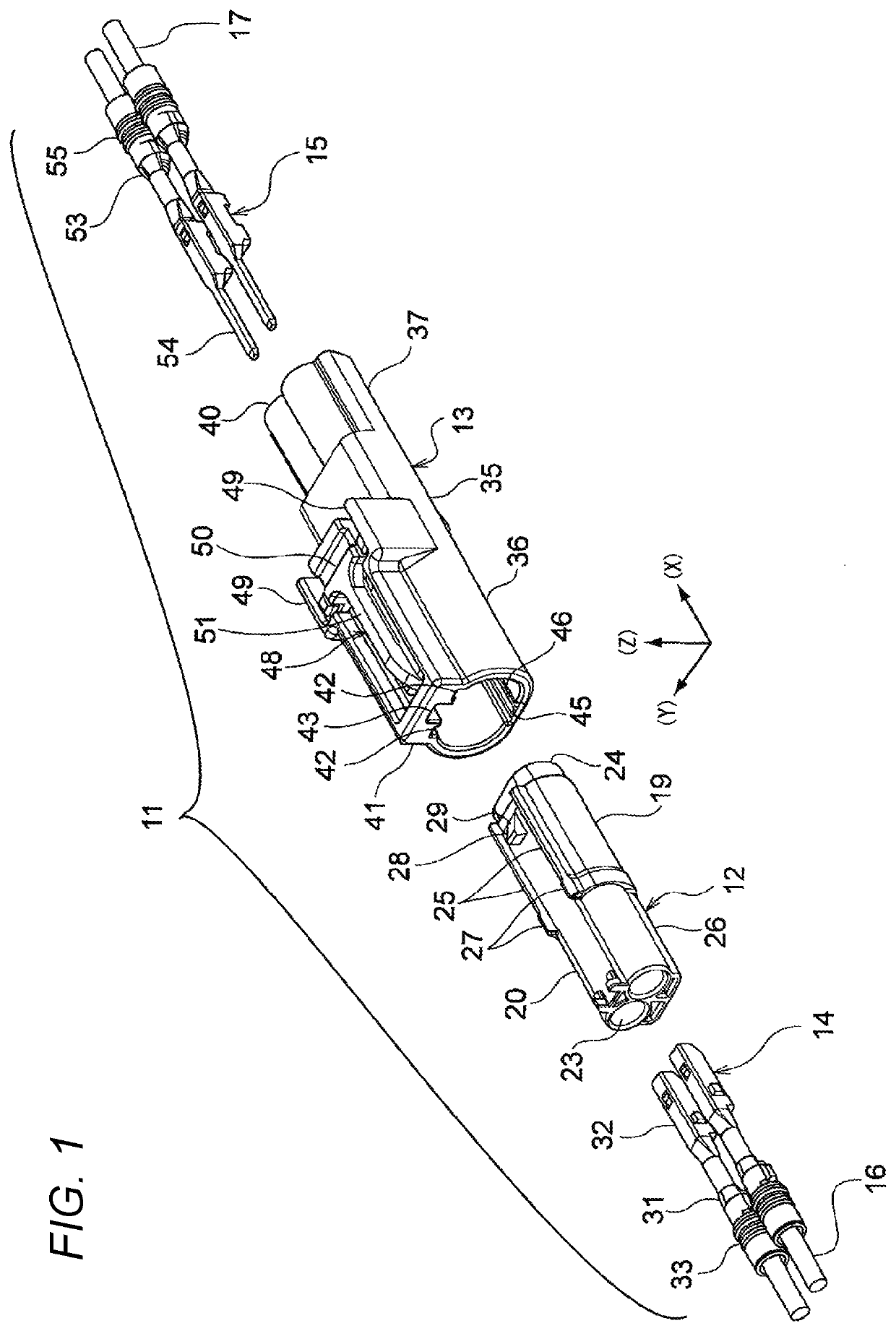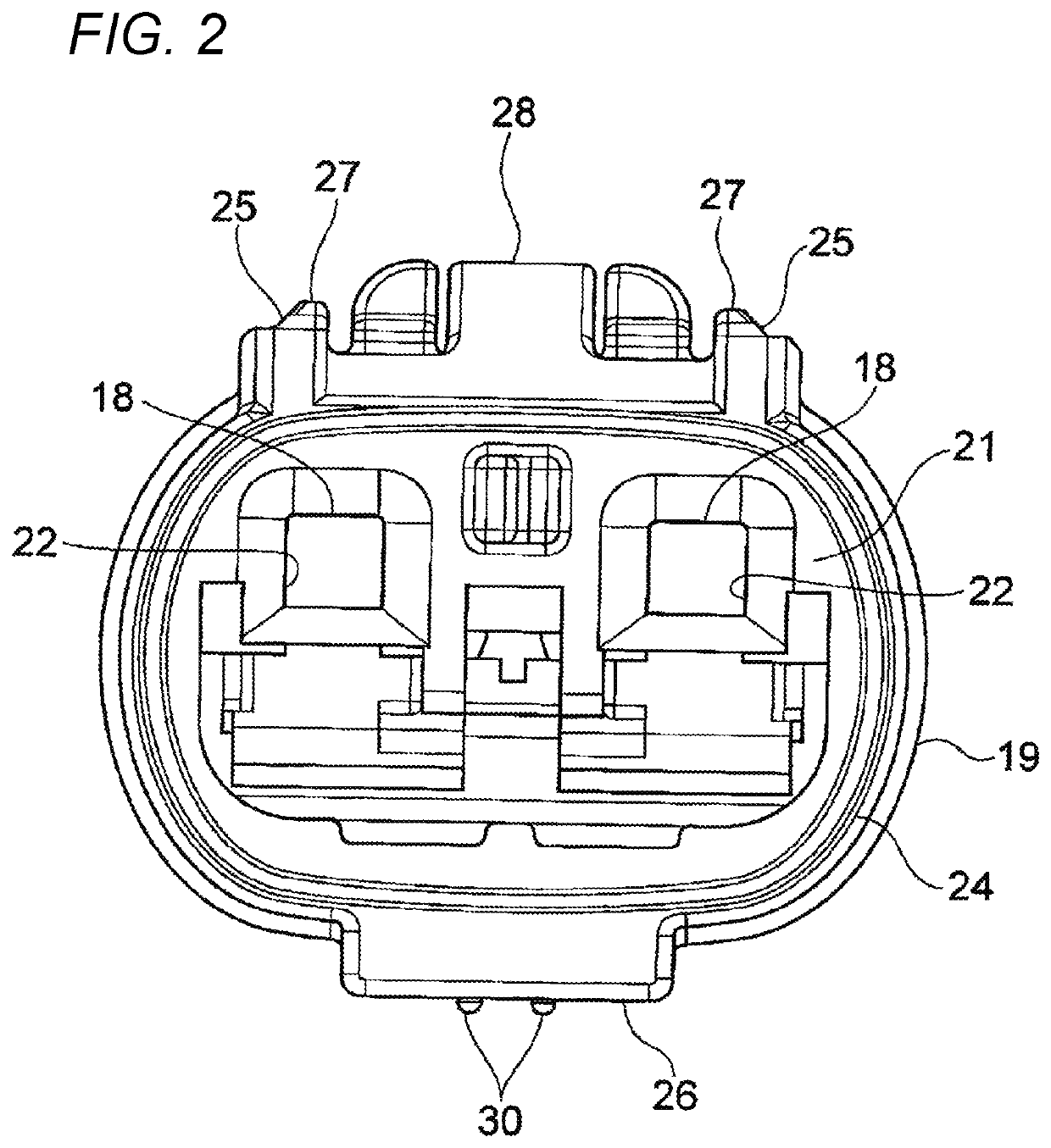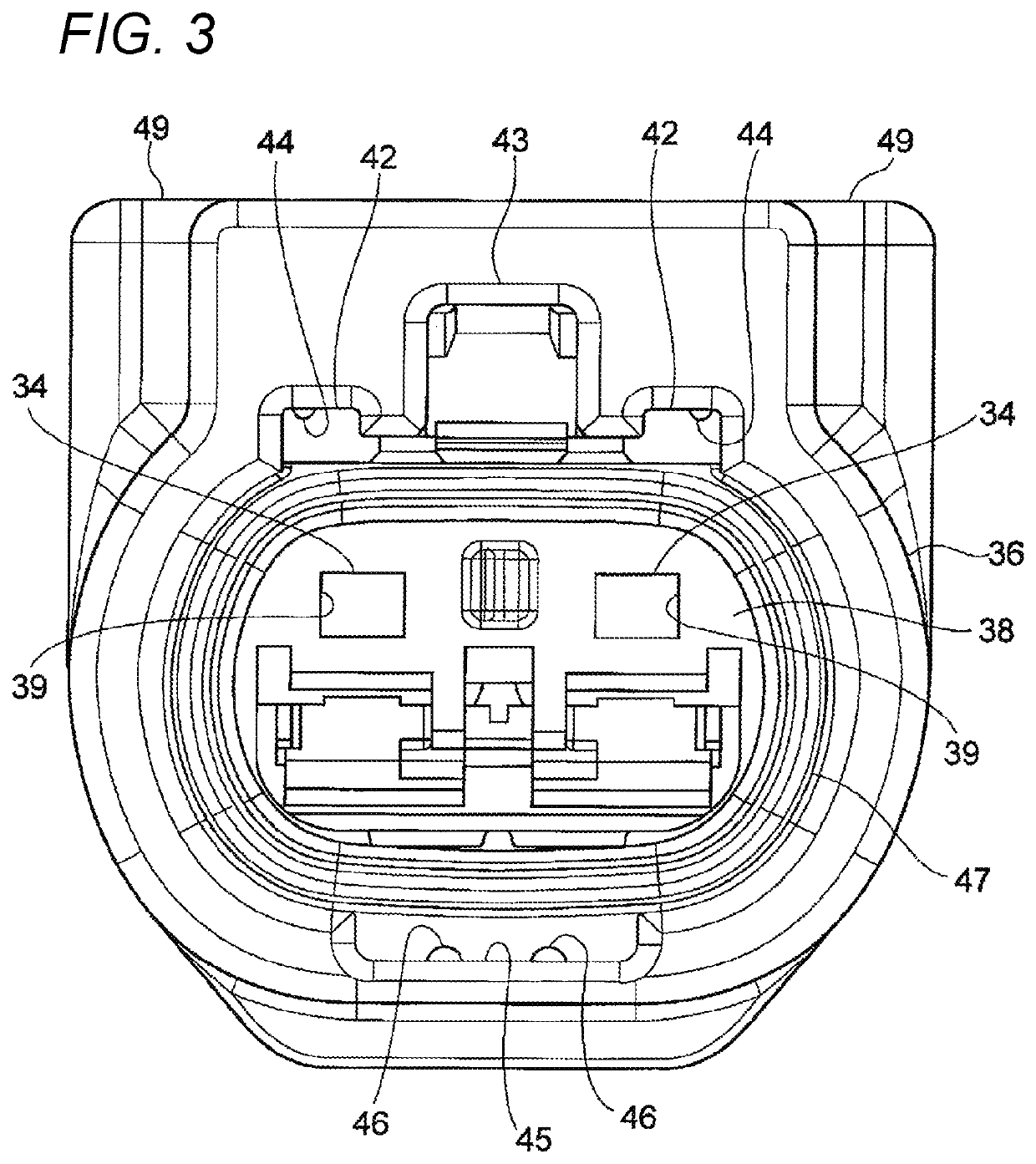Connector
a technology of connecting rods and connectors, applied in the field of connecting rods, can solve problems such as the risk of affecting the contact between the terminals of the female terminal, and achieve the effect of improving the waterproofness in the cavity and being easily caugh
- Summary
- Abstract
- Description
- Claims
- Application Information
AI Technical Summary
Benefits of technology
Problems solved by technology
Method used
Image
Examples
first embodiment
[0029]Hereinafter, a first embodiment of a connector according to the invention will be described with reference to the drawings. As illustrated in FIG. 1, a connector 11 of the first embodiment includes a female housing 12 (one housing) and a male housing 13 (other housing) which are fitted into each other. The connector 11 is configured such that a female terminal 14 housed in the female housing 12 and a male terminal 15 housed in the male housing 13 are electrically connected by fitting the female housing 12 and the male housing 13. Electric wires 16 and 17 are connected with the female terminal 14 and the male terminal 15, respectively. The female housing 12 is configured to be fitted and locked to the inside of the male housing 13 when fitted into the male housing 13. In FIG. 1, each housing houses two terminals. However, the number of the housed terminals is not limited to two. Incidentally, hereinafter, the description will be given with a definition in which an X direction o...
second embodiment
[0061]A second embodiment is different from the first embodiment as follows. As illustrated in FIG. 13A, in the waterproof structure formed by fitting the female-side tubular body 24 and the male-side tubular body 47, an annular protrusion 72 which contacts with the facing surface (not illustrated) of the male-side tubular body 47 is provided over the entire periphery in a facing surface 71 of the female-side tubular body 24 of the facing surfaces of the female-side tubular body 24 and the male-side tubular body 47, and an inclined surface 73 of which the projection height is lowered from the front end side of the female-side tubular body 24 toward the rear end side is formed in the annular protrusion 72.
[0062]In the second embodiment, the annular protrusion 72 is provided in the facing surface 71 of the female-side tubular body 24. Thus, when the female-side tubular body 24 and the male-side tubular body 47 are fitted to each other, the annular protrusion 72 is pushed against the f...
third embodiment
[0066]A third embodiment is different from the first embodiment as follows. In the waterproof structure formed by fitting the female-side tubular body 24 and the male-side tubular body 47, only the projecting length of the male-side tubular body 47 to the front side is lengthened. FIGS. 14A and 14B are views illustrating a state where the female-side tubular body 24 and the male-side tubular body 47 are fitted. In FIGS. 14A and 14B, the projecting length of the female-side tubular body 24 to the front side is the same as a length (lap length) in the front and rear direction where the outer peripheral surface of the female-side tubular body 24 contacts with the inner peripheral surface of the male-side tubular body 47.
[0067]As illustrated in FIG. 14A, a projecting length L3 of the male-side tubular body 47 to the front side is set longer than a projecting length L4 of the male-side tubular body 47 to the front side illustrated in FIG. 14B. Thus, the female-side tubular body 24 can be...
PUM
 Login to View More
Login to View More Abstract
Description
Claims
Application Information
 Login to View More
Login to View More - R&D
- Intellectual Property
- Life Sciences
- Materials
- Tech Scout
- Unparalleled Data Quality
- Higher Quality Content
- 60% Fewer Hallucinations
Browse by: Latest US Patents, China's latest patents, Technical Efficacy Thesaurus, Application Domain, Technology Topic, Popular Technical Reports.
© 2025 PatSnap. All rights reserved.Legal|Privacy policy|Modern Slavery Act Transparency Statement|Sitemap|About US| Contact US: help@patsnap.com



